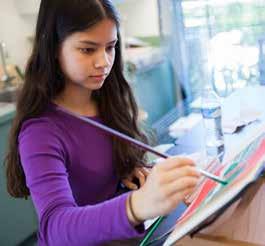







Tom Gilder Head of School –
THIS PLAN REPRESENTS THE FUTURE OF OUR SCHOOL, WHICH WE ALL HOLD DEAR. MORE IMPORTANT, IT REPRESENTS THE FUTURE OF OUR STUDENTS, WHO WILL GO ON TO SHAPE THE WORLD WITH WINDWARD AS THEIR FOUNDATION.









Tom Gilder Head of School –
THIS PLAN REPRESENTS THE FUTURE OF OUR SCHOOL, WHICH WE ALL HOLD DEAR. MORE IMPORTANT, IT REPRESENTS THE FUTURE OF OUR STUDENTS, WHO WILL GO ON TO SHAPE THE WORLD WITH WINDWARD AS THEIR FOUNDATION.
Community and collaboration are at the core of the School’s philosophy and reflected every day in the warm, welcoming atmosphere on campus. Students are motivated to excel and to explore new learning opportunities both within and outside of the classroom. The faculty, administration, and staff support the students in their academic and personal growth. Upper School students, trained as Peer Counselors, offer a sounding board
for their classmates and Middle School students. Windward’s commitment to a diverse and inclusive community is an integral part of its educational fabric and inextricably linked to the mission of the School. Windward’s inviting 9.5 acre campus and purpose-built facilities provide an idyllic setting for students to learn, work, and socialize.
Beginning in the Winter of 2015, the Windward School Strategic Planning Committee, along with members of the School community, began the process of looking forward to the next six years during which the School would celebrate its 50th anniversary. The 24-member committee included members of the Board of Trustees, parents, faculty, administration, students, and alumni.
The Committee began its process by engaging with leaders from previous Windward strategic planning efforts and hearing a presentation by Jim McManus, the Executive Director of the California Association of Independent Schools, about the landscape of private education. The Committee then gathered feedback from faculty, staff, alumni, parents, and students and met multiple times during the school year to review all aspects of the School and its program. As themes emerged during this process, the Committee
consulted with different constituencies in the community to solicit additional feedback.
This Strategic Plan represents the culmination of the Committee’s many hours of work evaluating the best ways to improve Windward’s program and community. Following the model of Stanford University’s Design School, the Committee framed its plan using a series of guiding questions that would serve as the focus of the School’s work from 2016-2023. Each year, using this plan, the Head of School and the administrative team worked in partnership with the Board of Trustees to identify the areas of focus for the year ahead in seeking to address these questions and to help Windward achieve its mission. Throughout each year, the Board and the community were updated on the School’s progress.
The 2016-23 Windward Strategic Plan consists of nine goals. Following the model of the Stanford Design School, the plan is framed as a series of guiding questions. Each year, the Head of School, Administrative Team, and

Board of Trustees partnered together to identify the areas of focus for the year in order to address these questions and further Windward’s mission.
How do we further instill and develop in students the communication skills, work habits, habits of mind, knowledge, and resilience needed for their success and personal fulfillment in college and beyond?
Students are the central focus of all of the work taking place at Windward. Windward’s mission statement calls on the School to inspire our students to be well-informed and prepared young adults. As education and the world evolve rapidly, we must examine the impact of these changes on the skills and habits our students need to develop in order to be prepared for college and beyond. As we gathered feedback from our community, many people—especially our alumni—expressed the importance of helping students develop essential skills and habits, including writing and presentation skills, creativity, collaboration, and grit.
As we move forward, we need to make sure that we enable students to develop the character traits and to become proficient in the areas they will need for their long-term success. To support research into best practices at the collegiate level, Windward has joined the Educational Advisory Board (EAB). The EAB research forums provide member schools with proven, peer-tested ideas from colleges and universities around the world. This research will directly support the work of the CTL by helping to identify best practices and adapting them to fit Windward’s needs.
The major steps the School has taken in order to accomplish this goal include:
• L ed by the Center for Teaching and Learning and the Administrative Team, the School engaged in deep research to identify the competencies that will be most important for our students to develop
• Based on this research, the School engaged in a process to draft, gather feedback on, revise, refine, and finalize a set of student core competencies.
• The School is now engaged in the work of evaluating and refining the program based on these competencies as well as developing methods for documenting and measuring students progress in these identified areas.

How can Windward support all members of its community in being healthy, engaged, and balanced people who are comfortable taking healthy risks, take joy in learning, and have a sense of purpose larger than themselves?

One of the core elements of the Windward experience is our nurturing, supportive community. We seek to help all members of our community lead healthy and balanced lives. Through our work with Stanford University Professor Denise Pope and her Challenge Success program, we have examined ways to make a Windward education more engaging without making it more stressful.
Our construction of the Peak Performance Center, our renovation of the food service area, and our late start to school on Wednesdays have yielded significant benefits to the health of our community. The New York Times recognized Windward’s nutrition program as leading the way in developing “the new performance enhancer.” As we build on these successes, we need to support the engagement of all Windwardians by helping them see the joy in taking healthy educational risks, in learning from successes and setbacks, and in striving to make the world a better place.
The major steps the School has taken in order to accomplish this goal include:

• The School has redesigned its schedule, moving to a modified block schedule in which classes meet for longer periods of time but fewer times per week, reducing both student and faculty stress.
• The School took numerous steps in supporting the physical and mental health and well-being of all community members during the pandemic
• The School developed and implemented a seminar program in grades 7-12 focused on the social and emotional growth of our students. Dedicated time for seminar was built into the schedule.
• The School implemented a new division structure, dividing grades 7-12 into 3 divisions - Middle School (Grades 7 and 8), Prep (Grades 9 and 10), and Collegiate (Grades 11 and 12), providing a dedicated team to provide developmentally appropriate support to students and families.
The driving force behind Windward’s dynamic education is the strength of its faculty, administration, and staff. Windward teachers are experts in their subject areas and in current pedagogy, and they respond to the individual needs of their students. All faculty, administration, and staff work to make Windward an optimal learning environment for our students.
In order for all of Windward’s employees to provide the best support possible for the development of our students, they need to engage in ongoing research, learning, and growth. Therefore, Windward needs to provide all employees with the feedback, support, and resources that will promote their ongoing professional growth in a manner that reflects the mission and strategic goals of the School.

How can Windward support faculty, administration, and staff in being effective and innovative in their roles and in modeling lifelong learning through ongoing professional growth?
The major steps the School has taken in order to accomplish this goal include:
•2018-2019 School Year → We focused on further development of our Responsive Teaching Mission, specifically aligning our already developed KUD’s (Learning Goals) with Assessment practices and focusing on Instructional Strategies to support Responsive Teaching. We spent two full day in-services and a full faculty and each member of the faculty chose a professional learning group with a focus in one of these areas
•2019-2020 School Year → Professional Development focused on Communication as an overarching theme, specifically looking at our new Core Competencies and what they communicate to all constituencies and exploring student motivation and engagement in learning and the relationship between Nurture and Rigor. Additionally, we explored our own understanding of hidden curriculum by looking at implicit biases and how they impact our work.
•March 2020 → As we transitioned into online teaching and learning, which lasted over a year. We learned new technologies and tried to reimagine how to be supportive and innovative in a vastly different school environment. Much of our professional development became supporting teachers as they tried to teach responsively online.
•2020-2021 School Year → Professional development during this mostly remote school year was all virtual and we developed a system of support for faculty to connect, collaborate, and learn from their colleagues across departments as we collectively continued to hone our craft and adjust to current circumstances.
•2021-2022 School Year → As we transitioned back to in-person learning, much of our professional development focused on how we could be responsive to the needs of our students, families, and each other as we returned to on-campus learning, recognizing that each student’s social-emotional and academic needs was different.
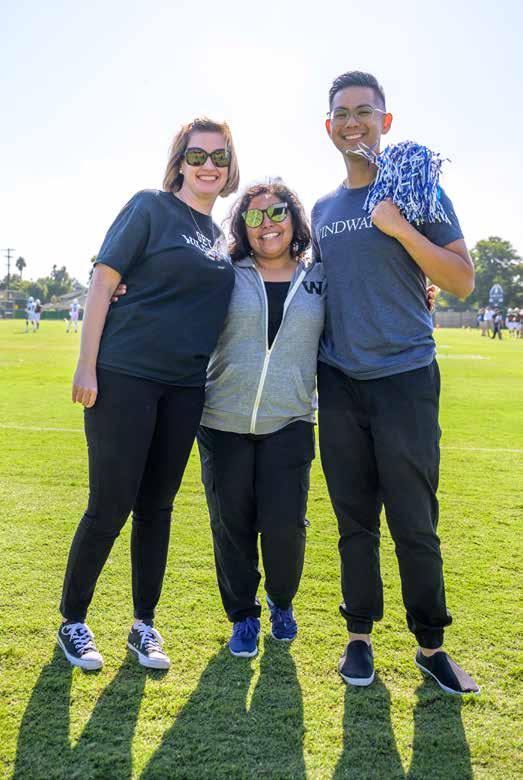
In what ways should Windward School evolve and enhance its innovative programs and pedagogy to meet the needs of students entering college and society in a rapidly changing world?
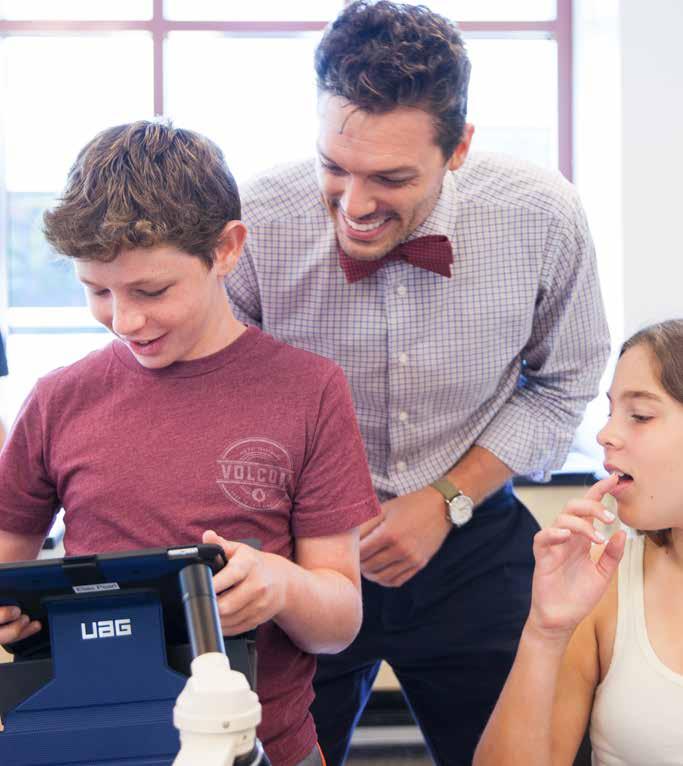
Windward has been and continues to be at the forefront of educational innovation. Its Global, STEAM, and Entrepreneurship programs are examples of areas in which Windward is increasingly recognized as having cutting-edge models for the rest of the nation. At the core of this success has been the School’s ongoing deep research of best practices and the educational partnerships that have been a natural outgrowth of this research.
Because Windward students will enter a world in which the pace of change is becoming faster and faster, the School’s educational programs cannot simply replicate what has been done in the past. As the present and future needs of its students change, it is essential for Windward’s faculty to adapt both the curriculum they teach and the instructional methods they use to prepare students for future success.
The major steps the School has taken in order to accomplish this goal include:
• The School created, piloted, refined and implemented a new weekly schedule in which classes meet 3 times per week for longer periods rather than 4 times per week for shorter periods. This new schedule allowed for a more student-centered, handson approach to instruction, advancing our efforts to incorporate the Windward Responsive Teaching model.
• All teachers created “KUD’s” for each of their courses, clearly identifying what students should know, understand, and be able to do when they completed the curriculum for the course.
• Based on these curricular revisions, the Responsive Teaching Team and the Center for Teaching and Learning led inservices and workshops on the best ways to take advantage of the new schedule to achieve the goals outlined in the “KUD”S.”
• Incorporated meetings, workshops and inservices for teachers to support and grow their abilities to incorporate formative and summative assessments and consistent, effective classroom routines in order to support student learning.
• In the Collegiate Division (Grades 11-12), teachers worked to scaffold college-level research and writing skills into Capstone courses.
• In the Prep Division (Grades 9-10), the process by which students select courses was refined and improved to help students to both deepen existing interests and explore new interests while taking developmentally appropriate academic and cocurricular risks.
• In the Middle School (Grades 7-8), they created and implemented a new Capstone program in order to allow students, faculty, and administrators to track student progress towards growing in the areas of our core competencies.

How do we best define and communicate the ways in which Windward’s dynamic, engaging education and nurturing, inclusive community make a Windward education compelling and unique?

Windward’s programs, facilities, and community have grown and developed tremendously during recent years. Windward’s position in the marketplace of independent schools continues to improve. As we continue to evolve, it is essential that we identify and articulate the qualities that make a Windward education unique to the members of our community, to feeder schools, to colleges and universities, and to the local and global community. We must make our identity known to the wider community in order to attract families to Windward who believe in and support the School’s mission and philosophy. In this way, we can ensure that the School’s founding vision and core values and the legacy of our founder, Shirley Windward, are preserved.
The major steps the School has taken in order to accomplish this goal include:
• Our Communications office partnered with the leadership of our DEIB program to guide the School’s efforts to make its messaging and materials more inclusive.
• The Communications office provided our community with information throughout the pandemic, both regarding important community health and safety measures and highlighting the ways in which the School evolved its educational program to respond to the needs of our students during online learning.
• The Windward website was redesigned and launched, providing a more user-friendly and effective tool for parents, students, alumni, and prospective families.
• The Windward Magazine was launched. The articles and profiles in the magazine have helped to engage community members, share updates on our strategic initiatives and give insights into student learning experiences and accomplishments.

How can all members of the Windward community advance the School’s commitment to diversity and inclusivity, creating a sense of belonging for everyone and an environment where difference is celebrated?

Windward’s commitment to creating a diverse and inclusive community is a vital component of both its dynamic education and its nurturing community. At the core of this commitment is the understanding that all community members have a role in creating a nurturing, inclusive, and welcoming school community. Recognizing that all members of the community benefit from the opportunity to interact with and to learn from people with different backgrounds and experiences, the School has dedicated approximately $2.5 million to Financial Aid each year. The process of creating an embracing community requires ongoing dialogue and reflection among all members of the community.
The major steps the School has taken in order to accomplish this goal include:
• The School created the position of Assistant Head of School for Diversity, Equity, Inclusion and Belonging and hired Roger Bridges to fill the position. Roger provides a senior administrator whose focus is on growing and developing our DEIB program.
• The School added the word inclusive to its mission statement and its tagline, further signaling our commitment to this work.
• The School developed and implemented student and parent affinity spaces.
• The School hired consultants to help us expand our efforts in admissions and developed methods to increase our outreach efforts.
• The School revised and refined its hiring practices, making sure that there is at least one person of color among the finalists for each position we hire.
• All members of the administration, faculty and staff engaged in professional development diversity workshops facilitated by outside experts during the summer of 2021.
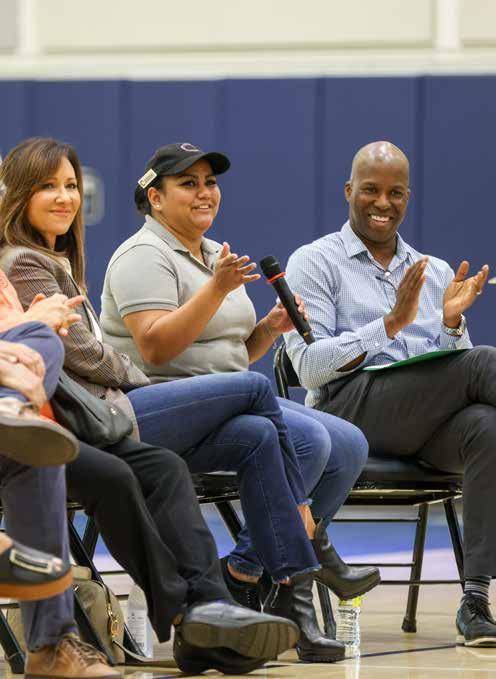
What can Windward do to preserve and enhance the strong connections between adults and students at the School?

How can Windward further strengthen its alumni network and its relationships with its neighbors, feeder schools, colleges and universities, and the local and global community?

Windward believes that positive and constructive relationships among adults and students are vital to the success of its educational mission. The accessibility of its faculty and the strength of its counseling programs have long been hallmarks of a Windward education. In the research performed for the development of this Strategic Plan, students, parents, faculty, and alumni all responded that these relationships were among the most important aspects of Windward to preserve and enhance.
The creation of the Windward Network provides the opportunity for Windward graduates to benefit from a lifelong connection with the School. In addition, Windward’s increasing efforts to partner with schools of all levels, from neighborhood schools, such as Grandview Boulevard Elementary, to universities, such as Stanford and MIT, will continue to benefit our community in countless ways.
The major steps the School has taken in order to accomplish this goal include:
• The School utilized a blend of methods to expand the engagement of its alumni. New, virtual models were developed and implemented during the pandemic, and a focus on increasing alumni participation in our DEIB programs allowed alumni to share their experiences and helped us celebrate the diversity of our community.
• The creation, growth, and development of the Windward Network has provided numerous internship, mentoring, and employment opportunities for our older students and for young alums. During the pandemic, the creation of virtual internships provided the opportunity for this program to continue despite the obstacles of this challenging time.
• Our Service Learning Program focused on developing partnerships with neighborhood schools and programs that serve the public. A Middle School Service Learning Program consisting of age appropriate, family friendly opportunities was created and expanded. During the pandemic, virtual afterschool programming for our partner public elementary schools were created and run by our students.
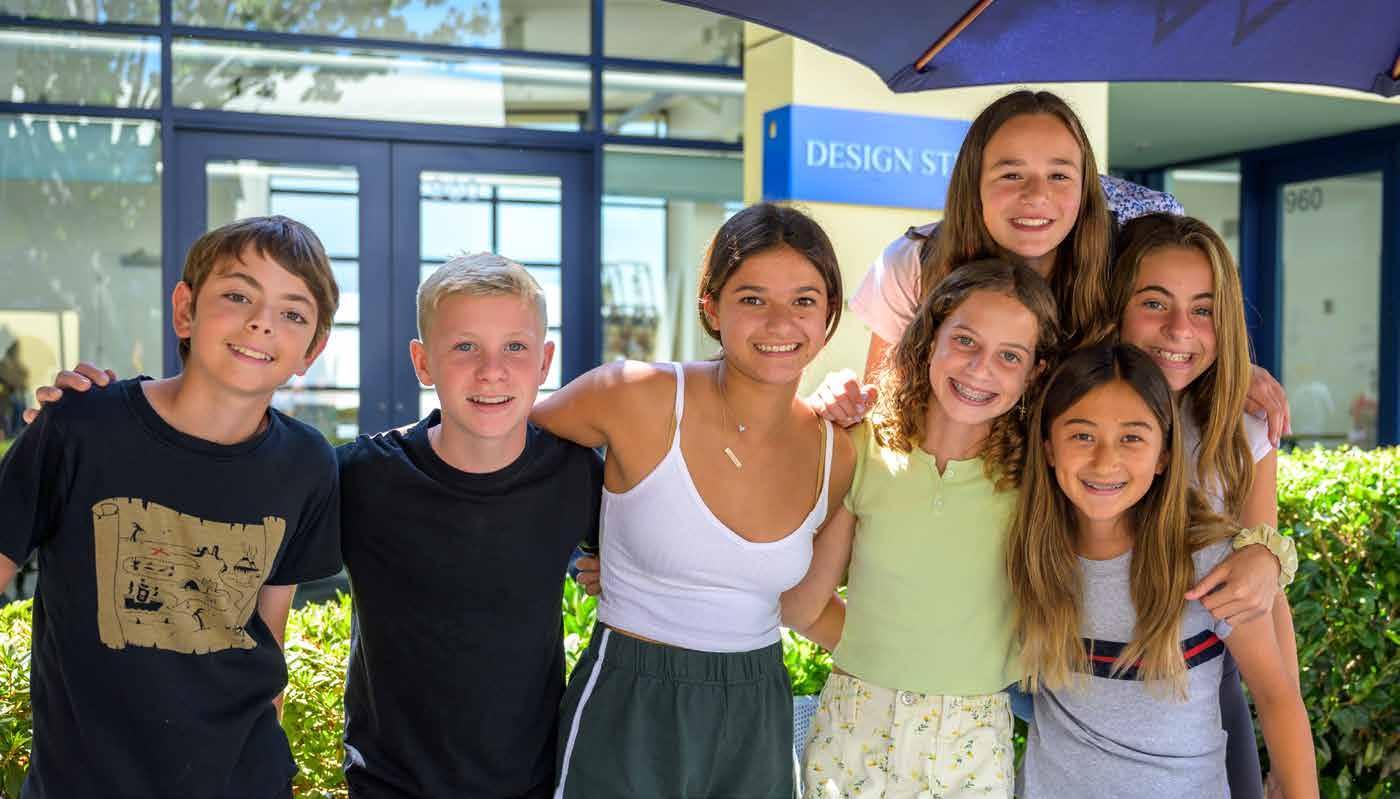
How
Windward has engaged in ongoing programmatic research and development during the past six years. As our innovative programs develop, it has become apparent that our facilities will no longer be able to meet the needs of our students. The development of our STEAM, Visual and Media Arts, and Entrepreneurship programs require new kinds of spaces for the programs to be fully realized. Visits to the Stanford d.school, the Haas School of Business, Menlo School, and many other institutions have helped us both to develop innovative programs and to see the possibilities that exist for our students given the right facilities.
In addition, our Performing Arts programs have outgrown their spaces and are in dire need of facilities that can support the excellent instruction and showcase the incredible talents of our students. As part of our research process, we have taken many of our performances offcampus to collegiate and professional venues. Seeing the ways in which performing in these spaces inspired the students to raise the quality of their work left no doubt that we need to provide them with the opportunity to have the proper facilities to showcase their work.
The major steps the School has taken in order to accomplish this goal include:
• The School designed and completed construction of the new Academic Hub, providing 11 new learning lab classrooms, a new art studio, a new graphic design studio, and office space for our Head of School, Admissions team, Middle School, Prep Division, and several of our academic departments.
• The School refurbished its existing blackbox theater, built a new rehearsal studio and a new dance studio, and converted an existing space into a new choral music studio.
• The School has secured the necessary entitlements, delineated our program goals and created designs for a new Innovation and Performing Arts Center as well as the Milken Family Plaza, an outdoor gathering space for our community in the center of campus.

How can Windward enhance its culture of philanthropy in order to raise the funds necessary to achieve the goals of our Strategic Plan and to ensure the long-term financial health of the School?

Achieving the ambitious goals and aspirations articulated in this Strategic Plan is essential in order to meet the academic and extracurricular needs of our students. Success will only be possible, however, with the financial support of all members of the community. Support for the Windward Fund provides the funds necessary on an annual basis to enhance our programs, to provide opportunities for deserving students whose families do not have the financial means to pay full tuition to attend Windward, and to support our teachers in their ongoing professional growth. In addition, construction of the Master Plan will require members of the community to stretch in order to make significant gifts. Finally, the School needs to increase the size of its endowment in order to ensure its financial well-being for years to come.
The major steps the School has taken in order to accomplish this goal include:
•The School undertook the innovation campaign, which has raised $25,286,595 as of August 11, 2022 These funds have been used to pay for the construction of the Academic Hub and will provide additional funds to support the construction of the Innovation and Performing Arts Center.
•The School has grown the Windward Fund, its annual fundraising drive, allowing it to expand its financial aid program and its support for faculty and staff to engage in research and professional development. These funds have also supported educational enhancements and the purchase of equipment for the newly constructed facilities.

During the 2022-23 school year, we have identified “Belonging and Growth” as our theme for the year. Our mission of a nurturing, inclusive community and our DEIB goals can be measured by our sense of belonging. The second part of the mission as a dynamic and engaging education can be measured by the growth of our community members and the School. This theme speaks to both the duality of our mission and the strategic planning process in which we will engage during the 2022-23 school year.
• We are adding the word “belonging” to what was our Diversity, Equity, and Inclusion program, transforming it into a Diversity, Equity, Inclusion, and Belonging (DEIB) program.
• The focus of this year’s opening faculty inservice is on creating connection and belonging. Our work will include both creating a sense of belonging for our faculty and staff and on growing the capacity of the adults on campus to create a sense of belonging for our students.
• The School will be adding faculty/staff affinity groups to our newly created parent/guardian and student affinity spaces.
• Having completed Phase 1 of the Master Plan, we are beginning the work of Phase 2, demolitioning the old apartment building and preparing the site for the future Innovation & Arts Center.
• We are continuing to raise the necessary funds for the construction of the Innovation & Arts Center and the Milken Plaza through the Innovation Campaign.
• We are continuing to raise the necessary funds to provide support for educational enhancements, financial aid, and the research and development fund that will enable growth in our educational program and socio-economic diversity.
• Based upon our ongoing research into new and emerging best practices, our Responsive Teaching Team will partner with our faculty, educational leaders and our Center for Teaching and Learning to update our curriculum and methodologies, and to take full advantage of the new facilities in our Academic Hub.
• This year, our community will engage in the process of developing its next Strategic Plan which will guide its growth for the coming years. The Board of Trustees will create a committee consisting of trustees, parents, faculty and staff, alumni, and current students to lead this work. We will be soliciting input and feedback from all of these constituencies throughout this process.




